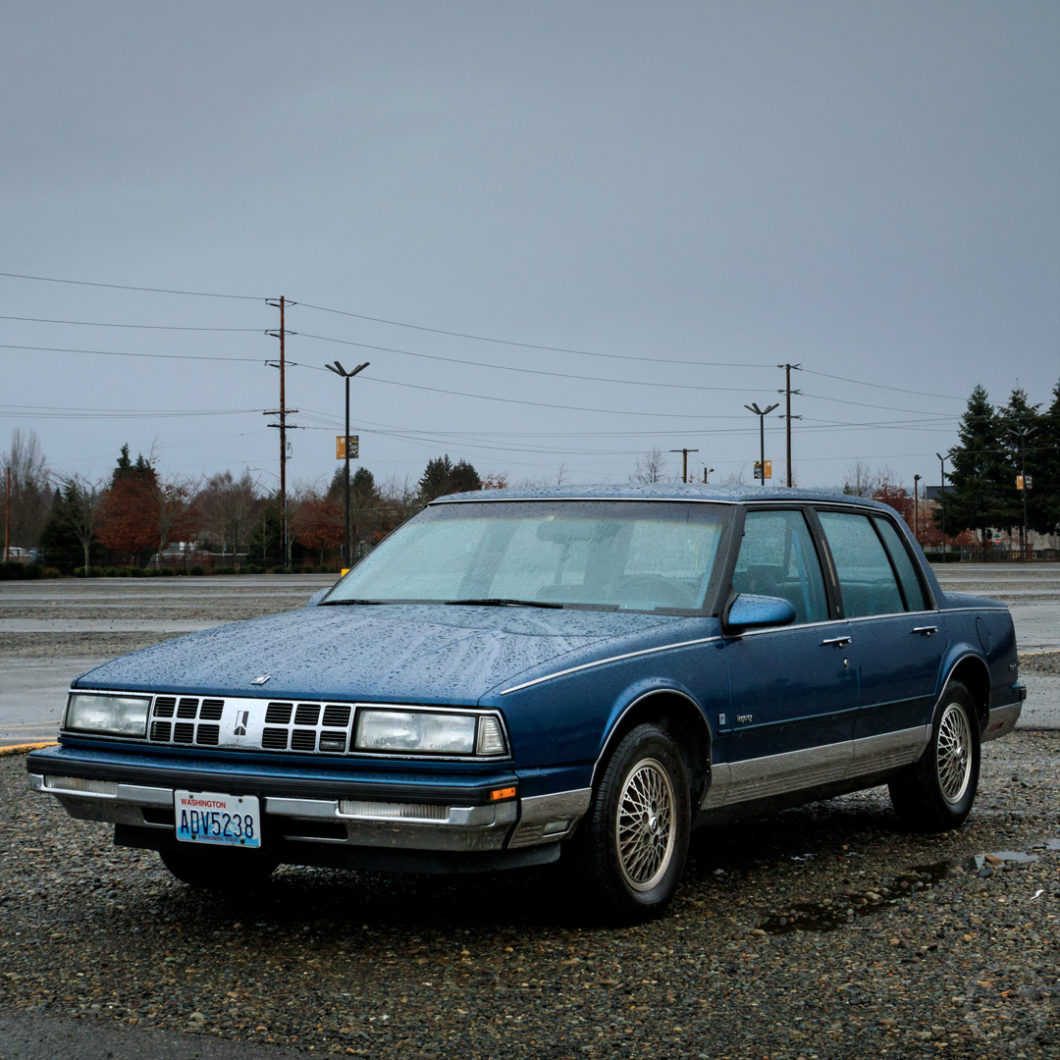It’s impossible to overstate the impact of the two 1970s fuel crises had on the automotive industry and, in particular, American giants like GM. By 1980, GM had enjoyed three consecutive major hits with downsized vehicles – the 1977 B/C, the 1978 A, and the 1979-80 X cars.
All played to trends that had existed before OPEC II (smaller, lighter cars, more technology), but it was hard to know what might happen next.
As oil prices stayed high 1980 and 1981, GM prepared for a world in which fuel prices would be perpetually high, initiating a wave of downsized front-drive designs. But that world didn’t materialize.
The World That Wasn’t
More efficient vehicles and practices adopted in the late 70s and early 80s, and lagging industrial demand in the wake of the subsequent recession, dropped oil prices by almost 70% between 1980 and 1986, with a particularly sharp dropoff in 1984-5.
Adjusted for inflation, oil was $118 a barrel in May of 1980, $75 in May of 1984, and just $33 in May of 1986.
It was into this environment that GM launched its downsized 1985-86 front-drive full-size cars.
Although the 1977 downsizing had seemed drastic at the time, it was mild compared to the 1985/86 change, which began with the C-body Buick Electra, Cadillac DeVille, and Oldsmobile 98 in the spring of 1984. Each of these cars is worthy of it’s own tale, but for today we’ll focus on the Oldsmobile.
A Little Too Familiar
Two feet (60cm) shorter, 6 inches (15cm) narrower, 700 lbs. lighter, and powered exclusively by V6s, the new Olds 98 looked very little like its long, low predecessors.
It looked, in fact, almost identical to the Buick – a result cost restraints on a pricey new program. GM invested nearly $3B designing these cars overall.
GM kept the B-body Buick LeSabre and Oldsmobile Delta 88 rear-drive for 1985 to gauge reaction, but had closely related fwd versions of those (now called the H-body) waiting in the wings for a late ’85 intro.
The former B-body wagons remained, as did several other rear-drive B/C cars through the corporation – Cadillac hedged it’s bets by retaining the rear-drive C-body Fleetwood Brougham.
Chevrolet kept the rear-drive Caprice, and Pontiac retained the Parisienne, a belated comeback to the rear-drive space until 1987, when it gave way to a full-size, front-drive Bonneville, a sibling of the H-body front-drive LeSabre/Delta 88.
In truth, GM did a very good job with these large front-drivers – they drove very well, operated quietly and efficiently, and initially they sold well too – the Olds 98’s best-ever sales year was 1985. Starting in the spring of ’84 it was a very long model year (almost 18 months), but the numbers suggested the new car was a big hit. At least at first. By the summer of 1985, GM was offering incentives on the new C-bodies.
They were high quality cars too – it was not uncommon to see these 98s with 200K+ on the clock in the mid-1990s. After 1985, power came exclusively from Buick’s 3.8L V6, but the lighter weight actually made them appreciably faster and more responsive than the old 307-powered rwd 98.
The only problem was that, to many people, they didn’t really look like the concept of a big car should look like to the traditional customers of such cars. And they didn’t look particularly different from the Buick Electra/Park Avenue to which they were closely related and to which they were mechanically identical.
In the downsizing programs of the Roger Smith era, commonality and cost took precedence over individual style, particularly at Buick and Olds, which weren’t so different in this period.
Many Oldsmobiles created under then GM design chief Irv Rybicki looked a little too much like their Buick siblings, but GM’s designers were legitimately trying to differentiate them within the confines of what they were allowed to do. That many of the cars, from the lowly N-body compact to the 98 and Park Avenue, also sported the slim C-pillared “formal look” didn’t help.
In 1987 and 1988, the Ninety Eight was updated with a Touring Sedan mode aimed at younger buyers and a general ‘aero look” refresh which attempted to differentiate it a bit from the Buick; but it wasn’t really enough.
Though these cars took criticism for their looks, they were in a better position than the E-cars which followed – the Buick Riviera, Cadillac Eldorado, and Olds Toronado – all of which saw sales crater when they were restyled in a similar vein.
That experience, and Oldsmobile’s general decline, led GM in the opposite direction – reworking the downsized platforms into larger, more well-differentiated cars.
In 1991, the bones of this 98 were stretched and restyled into a larger, but mechanically similar, version of the car with more stylistic ties to the past – unfortunately it seemed to be too little, too late – the later 98 was not a great seller and the long-running flagship was discontinued in 1996 as Oldsmobile struggled to survive.


Pingback: The Lost Randy Vanwarmer Interview, On the 20th Anniversary of His Death